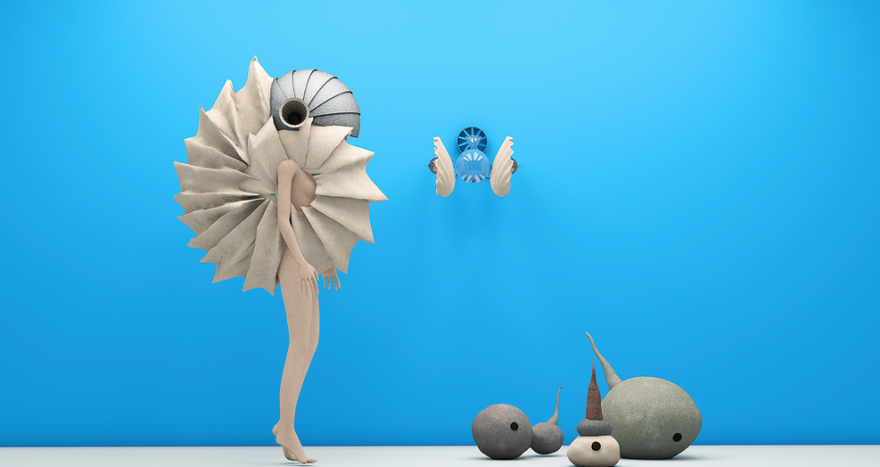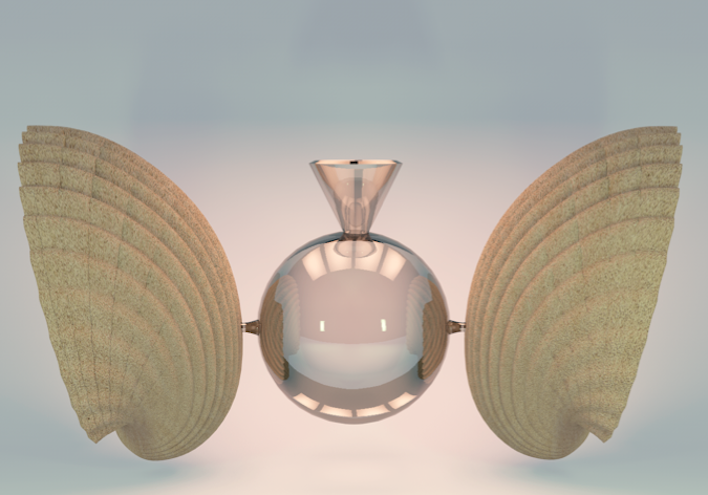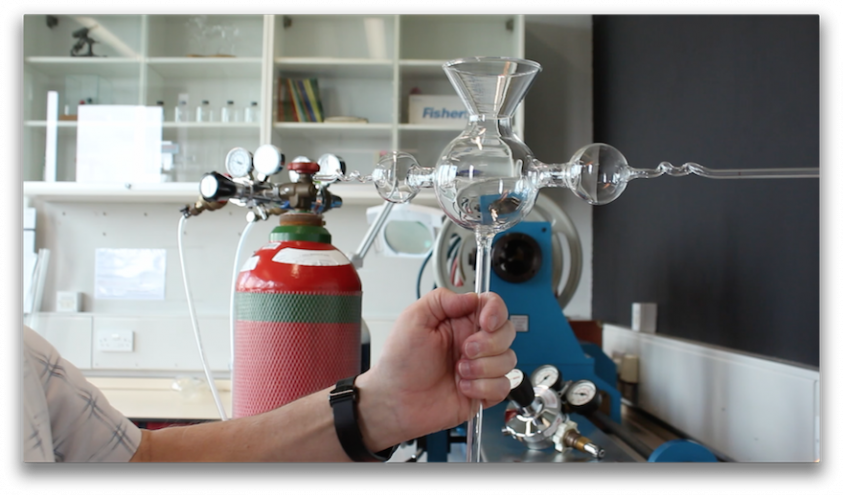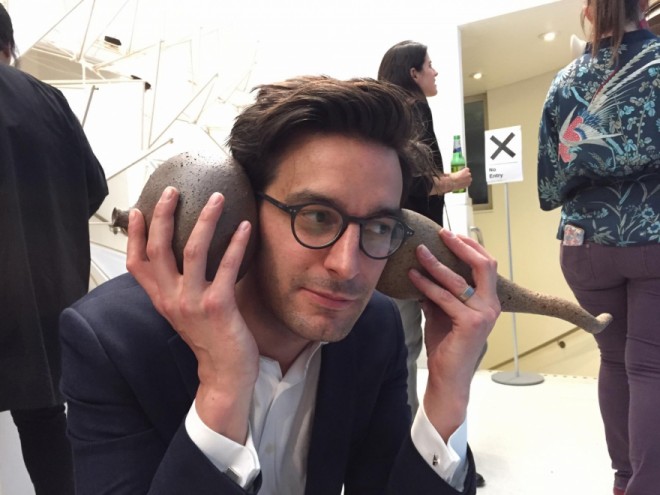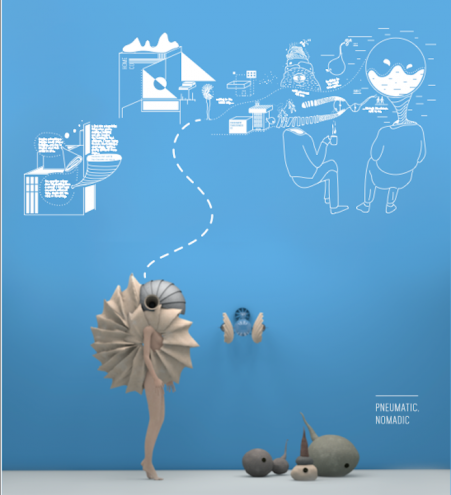Turkish-born Özgün Kiliç is both an audio-visual artist and designer. Her graduate project in Information Experience Design from Royal College of Art (RCA), Pneumatic Nomadic, is a series of three sculptural listening devices that disrupt and augment how people perceive and interact with their environment through sound.
The project comprises a wearable sculptural headset, a number of “sounding stones” and a shared glass resonator, each of which amplifies a single frequency and obscures others. The listening devices are intended to adjust people's attitudes to their sonic perception of their world by ultimately purifying the chaotic environment. Instead of masking, blocking or canceling out unwanted sounds, the project aims to make use of the acoustic properties of various materials to affect, transform and regulate sounds from the surrounding soundscape.
The sounding stones, which “look like pebble stones you’d find at a beach”, are large self-standing ceramic resonators that Kiliç built in collaboration with Norwegian ceramic artist Sonja Tanner. To experience the frequency of the sounding stones, you need to embrace the sculptural device and hold it to your ear in an interactive experience Kiliç calls “hearing through touching”. When you’ve embraced the device, it will emit a low-range frequency and when you’ve placed the headset sculpture on, it will play a calming and meditative frequency.
Kiliç describes Pneumatic Nomadic as an experiment into finding a critical understanding of how different sounds alter the way we navigate both our physiological and psychological world.
Living as a pedestrian in London prompted Kiliç 's concern for how we hear the world:
I’ve been taking different paths to walk from one location to another. As opposed to the time and cost efficient paths that the geo-data apps today suggest, I curated my walks based on the soundscape I’m walking through. I would eventually choose the most sonically desirable paths, which I came to realise had recognisable effects on my mood.
“It’s not a big surprise that a very low-frequency engine brake sound would give you a frown as compared to how walking along Hyde Park to the humming of a tropical bird eases your brainwaves,” she says.
Kiliç’s work falls between art and design with, she says, “a pinch of science”. Her multimodal approach to design is tough to sell to the market, so Kiliç often opts to call her work “poetry”. Though this project is very conceptual in its nature, Kiliç believes that the sounding stones have the potential to be modified and scaled to “pure musical instruments, sculptures for sale, and performative tools for experimental sound artists”.

